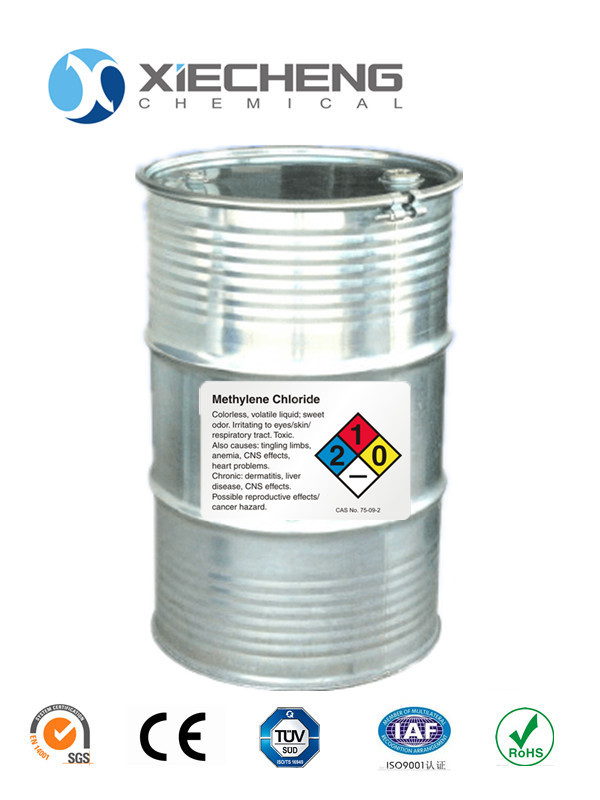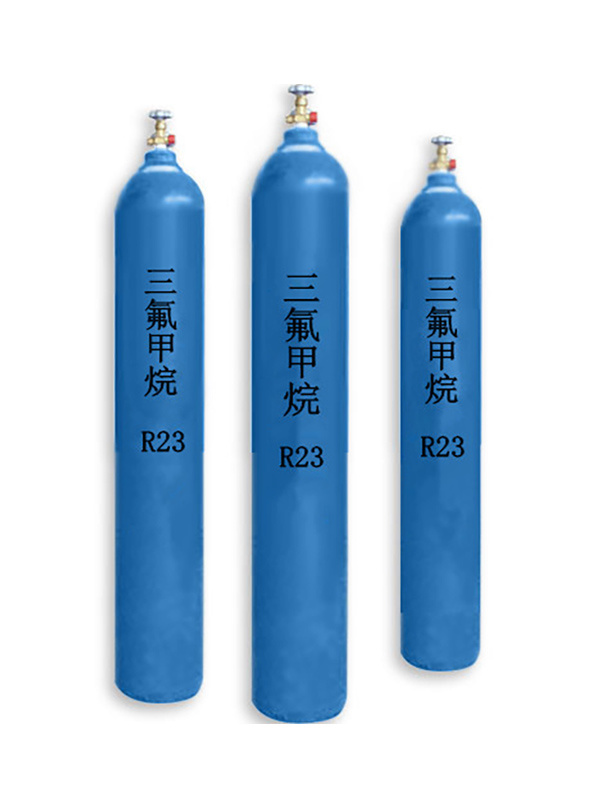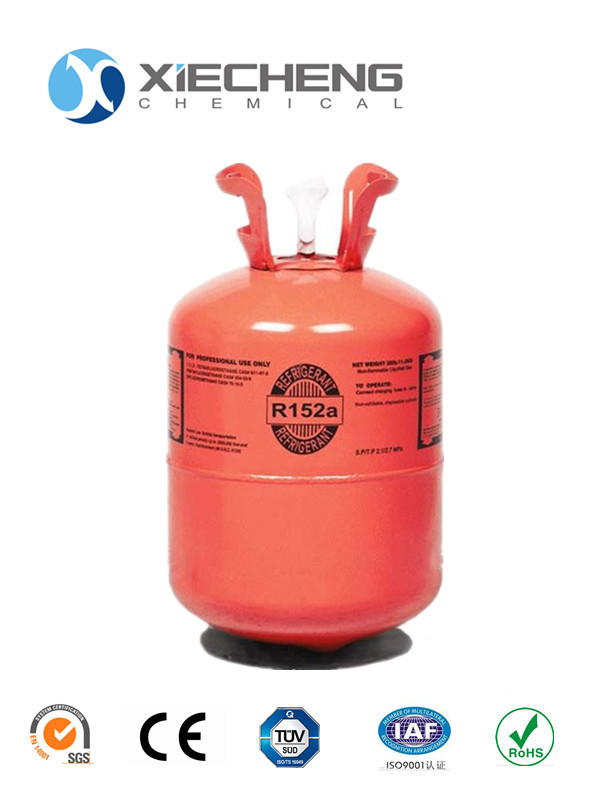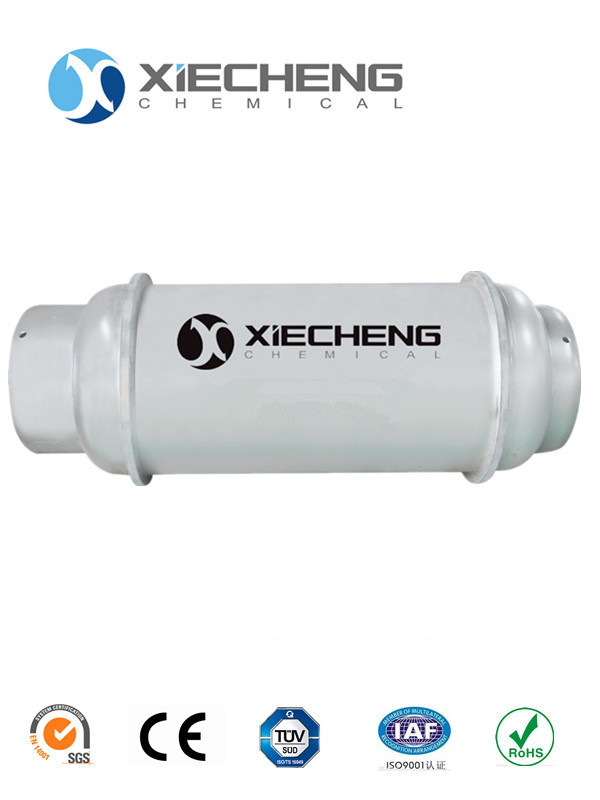
Packaging specifications: Reusable cylinders—40 liters
R-23 refrigerant, also known as R23, Freon 23, F23, F-23, HFC23, HFC-23. Because R-23 belongs to the HFC class (non-ODS substances—Ozone-depleting Substances)—it does not damage the ozone layer at all. It is an environmentally friendly refrigerant recognized and recommended by the vast majority of countries worldwide, and is one of the mainstream environmentally friendly refrigerants.
Scope of application
As a widely used ultra-low temperature refrigerant, the excellent overall performance of HFC-23 makes it a very effective and safe substitute for CFC-13 (R13, R-13, Freon 13, Freon-13) and R-503. It is mainly used in environmental test chambers/equipment (thermal shock testers), freeze dryers/freeze-dryers, ultra-low temperature refrigerators or freezers, blood bank refrigerators, biochemical test chambers and other cryogenic equipment (including scientific research refrigeration, medical refrigeration, etc.), mostly used in the low-temperature stage of these cascade refrigeration systems. Trifluoromethane can also be used as a gaseous fire extinguishing agent, and is an ideal substitute for Halon 1301, with characteristics such as being clean, low-toxic and having good fire extinguishing effects.
Physical properties
| Molecular formula | CHF3 | |
| Molecular weight | 70.01 | |
| Boiling point ℃ | -82.10 | |
| Freezing point ℃ | -155.00 | |
| Liquid density kg/m3 | 430.00 | |
| Liquid density (20℃) kg/m3 | 806.6 | |
| Saturated vapor density (20℃) kg/m3 | 263.0 | |
| Critical temperature ℃ | 25.90 | |
| Critical pressure MPa | 4.84 | |
| Critical volume ml/mole | 133 | |
| Ozone depletion potential ODP | 0.00 | |
| Global warming potential GWP | 12000.00 | |
| Evaporation potential at boiling point kJ/kg | 240.0 | |
| Solubility in water (25℃) % (w/w) | 0.10 | |
| Specific heat (liquid, 25℃) kJ/kg·℃ | 1.55 | |
| Minimum design concentration for fire extinguishing (%,v/v) | 16 | |
| Vapor density (air=1) @25℃ | 2.4 | |
Quality standard
| Item | Fire extinguishing agent technical indicators | Refrigerant technical indicators |
| Purity,%≥ | 99.5 | 99.5 |
| Moisture, mg/kg≤ | 20 | 10 |
| Acidity (HF meter), mg/kg≤ | 1 | 1 |
| Evaporation residue,%≤ | 0.1 | 0.01 |
| Suspensions or precipitates | Invisible | Invisible |
| Chlorides | — | Qualified |
| Non-condensable gas in gas phase,% (v/v) | — | 1.5 |
| Odor | Slightly ethereal | |
| Hazardous goods category | 2.2 | |
| Packaging category | Ⅱ |
Environmental impact
I. Health hazards
Route of entry: Inhalation.
Health hazards: Contact can cause headache, nausea and vomiting, and has anesthetic effects.
II. Toxicological data and environmental behavior
Toxicity: Low toxicity.
Acute toxicity: Rats inhaled 20% × 2 hours, survived; guinea pigs inhaled 50~80% (continuous inhalation in an oxygen-enriched environment), survived.
Hazardous characteristics: Non-flammable. Decomposition produces highly toxic fumes when heated.
Combustion (decomposition) products: Hydrogen fluoride.
3. On-site emergency monitoring methods:
4. Laboratory monitoring methods:
5. Environmental standards:
The maximum permissible concentration of harmful substances in the air in the former Soviet Union workshops was 1000 mg/m3.
Emergency treatment and disposal methods
Leakage emergency handling
Quickly evacuate personnel from the leakage polluted area to the upwind side, isolate, and strictly restrict entry and exit. Emergency responders are recommended to wear self-contained positive pressure respirators and general work clothes. Cut off the leak source as much as possible. Ventilate reasonably and accelerate diffusion. Leaky containers should be properly handled, repaired and inspected before reuse.
Protective measures
Respiratory protection: When the concentration in the air is high, it is recommended to wear a self-priming filter-type gas mask (half mask).
Body protection: Wear general work clothes.
Hand protection: Wear general work protective gloves.
Other: Avoid high-concentration inhalation. When entering tanks, confined spaces or other high-concentration areas, supervision is required.
First aid measures
Inhalation: Quickly remove from the scene to fresh air. Keep the respiratory tract open. If breathing is difficult, give oxygen. If breathing stops, immediately perform artificial respiration. Seek medical attention.
Fire fighting methods: This product is non-flammable. Cut off the gas source. Spray water to cool the container, and if possible, move the container from the fire scene to an open area.
Keywords

R23
Contact Information
Product Categories
Inquire Now
If you are interested in our products, please leave your email address, and we will contact you as soon as possible, thank you!









